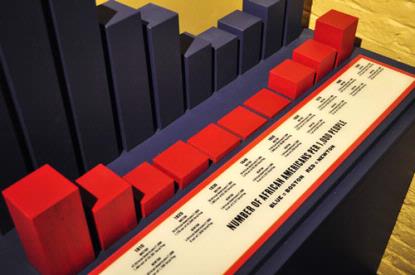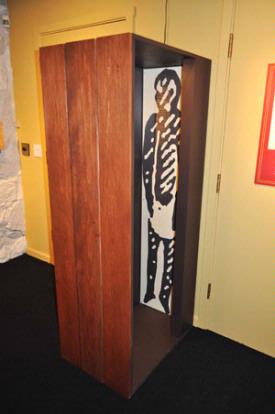When Americans today think of slavery, many think of the antebellum South. Slavery, however, is part of New England history as well. Over the course of centuries, Americans living in the North have divorced themselves from the history of slavery in their communities. Historians and scholars are well aware of this history, but for most people it is easy to be oblivious to the legacy of slavery in the North. People in our region tend to identify with famed abolitionists like William Lloyd Garrison, or to see the historic house in the community that is rumored to be an Underground Railroad stop and as part of the virtuous, noble heritage of the North. The most arrogant among us will scorn the South for being backward enough to have adopted the dreaded institution. We are reminded of the divisions in our country’s history during each election cycle, with so-called “red states” and “blue states” that mimic the geographical patterns of slaveholding and nonslaveholding states in the nineteenth century.
It is easy to forget things that are shameful about our past, but it is more important to face the facts. Thanks in part to funding from Mass Humanities, Historic Newton’s new permanent exhibition, Confronting Our Legacy: Slavery and Antislavery in the North, reveals the history of slavery in our hometown of Newton, Massachusetts.
To put together this exhibition, we enlisted professional scholars as well as qualified volunteers to research the history of slavery in Newton. We learned who had been enslaved here, their names, who their enslavers were, and a little bit about what their lives were like. We also got a better sense of how Newton fit into the larger context of colonial Massachusetts and the role it played in the world of the Atlantic slave trade.
On February 26, 1638, John Winthrop wrote that the ship Desire had arrived in Boston from the Caribbean with “some cotton, and tobacco, and negroes, etc.” This is the earliest record of slave importation to Massachusetts. It also describes New England’s role in the triangle trade. Slave-made products like molasses and sugar from the Caribbean were shipped to New England to make manufactured goods such as rum. Those goods could be traded in Africa for slaves or sold to Caribbean slaveholders. By 1644, Boston traders were importing slaves directly from Africa. Massachusetts, therefore, benefitted economically from the Atlantic slave trade.

This three-dimensional chart illustrates the rise-and-fall of the African-American populations of Boston (shown in blue) and Newton (shown in red) over the course of the 19th century.
In 1754 there were 2,711 slaves in Massachusetts, and 989 of them lived in Boston. Before 1783, when the Massachusetts Supreme Judicial Court declared slavery unconstitutional, there were at least 33 slaveholders and 50 enslaved people in Newton. Many claimed that slavery in New England was “patriarchal” and “benign” in comparison to southern slavery. Nevertheless, escapes were frequent in Massachusetts, and many slaves petitioned the General Court to end slavery or gain more rights for themselves and their children. Despite their efforts, slavery was the law of the land from 1641 to 1783.

Visitors can step inside a box that provides the same amount of space that someone would have while travelling as “cargo” on a slave ship across the Middle Passage.
Northern slaveholders often had only one or two slaves in their household. For whites, enslaved people provided additional labor that allowed the slaveholder to specialize in a trade or profession and to enjoy some leisure time. Slaveholding was also a status symbol in colonial America, but for the enslaved, it meant a life of hard work.
In the nineteenth century, many northerners had an economic interest in slavery as well. Textile manufacturers profited from the low cost of slave-grown southern cotton, and the slave population of the southern U.S., the Caribbean, and Latin America comprised a huge market for shoes, hats, tools, and other products made in northern factories, shops, and homes.
Slavery was not just a national, but a global institution, and our region took part in it in more ways than one. So what does that mean for us today?
Many whose families are recent immigrants or who never took part in slaveholding may claim that this history has nothing to do with them. Some even feel attacked in discussions about slavery in the North. “This has nothing to do with me,” is a common response. But confronting the legacy of slavery is not about blame; rather, it is about acknowledging the privileges derived by many from having enslavement of Africans and African Americans as part of our national past. When we face our history, with all its sobering ugliness, and learn about the complicity of the North as well as the South in American slavery, we will be better prepared to make our world today a more socially and politically just place.


